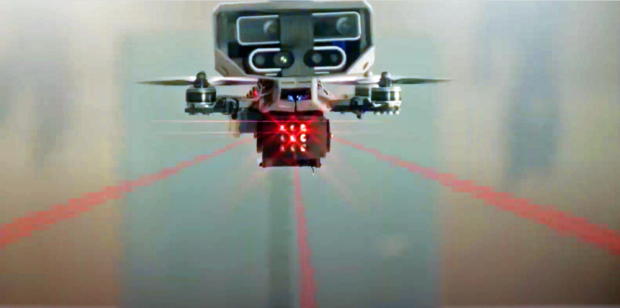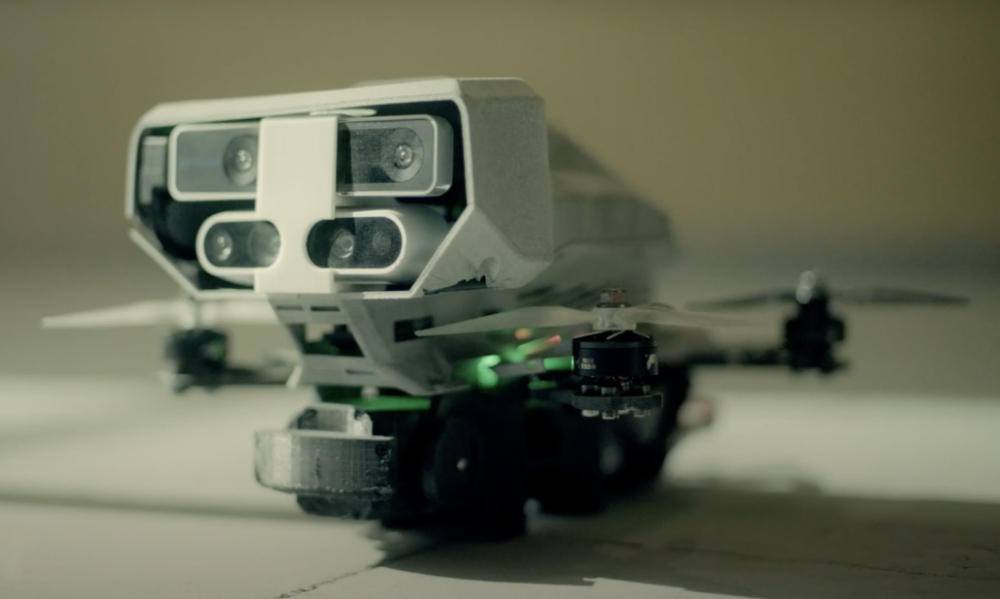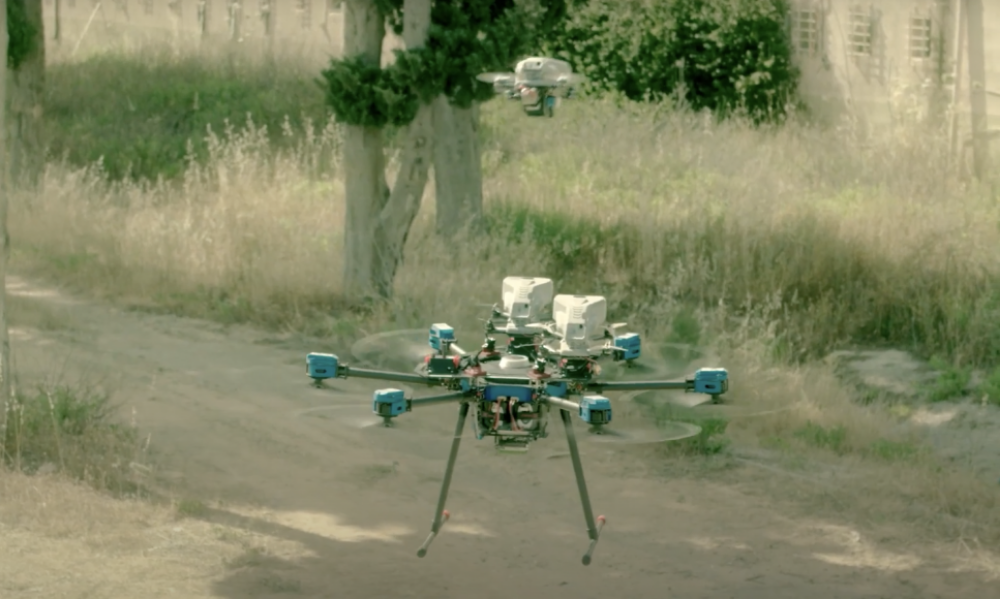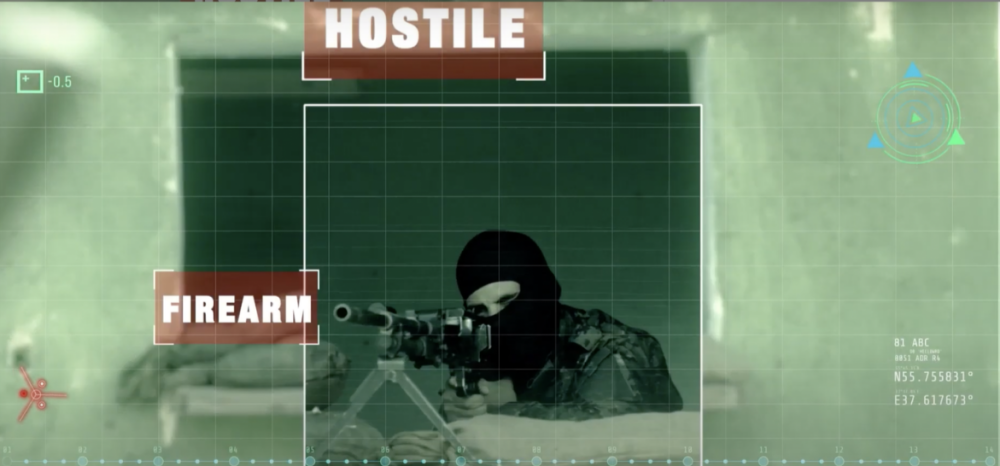LANIUS is Elbit Systems’ new drone-based search-and-attack loitering munition designed for short-range operation through deployment via a multicopter as well as by hand.
The design is based on racing drones which allows LANIUS to utilize high degrees of speed and maneuverability to essentially rush a target before exploding. Elbit’s introduction of LANIUS only underscores how rapidly small but deadly drones are iterating in the defense space.
According to a datasheet for the drone, LANIUS has a top speed of 45 mph, a maximum takeoff weight of 2.75 pounds (1.25 kg), an operational speed of up to 20 meters per second in an outdoor environment, and a limited flight time of just seven minutes. LANIUS can carry lethal or non-lethal payloads, though Elbit hasn’t specified what exactly those weapons will consist of. LANIUS is able to communicate through Wi-Fi or a software-defined radio, and while its ability to operate with a man-in-the-loop is prominently featured by Elbit, the drone can also autonomously execute a full flight profile without intervention if needed.
The company explains that the highly maneuverable drone is designed to conduct, GPS navigation, scanning, and mapping all in complex urban combat environments. This capability is achieved through the drone’s artificial intelligence (AI) technologies powered by an NVIDIA Jetson TX2 processor, allowing the drone to formulate a 3D map of its surroundings, which is then fed back to the operator through a handheld remote device.
“LANIUS is equipped with cameras fitted with multiple visual sensors and an IMU [internal measurement unit],” reads the LANIUS datasheet. “The system incorporates a SLAM [simultaneous location and mapping] algorithm, using image processing to identify points of interest and displays relevant data and identification information to the operator.”
In a promotional video released by Elbit, a unit of soldiers can be seen surrounded by enemy fire in an urban setting with poor vantage points and tall, fortified structures. Left with few options, the fictional squadron elects to deploy LANIUS. Despite sounding like something out of a video game, as does the LANIUS capability as a whole, this capability is certainly in line with what to expect from the future of warfare.
https://youtu.be/4McPHBQ9pNw
The drone racing pedigree of LANIUS is also certainly significant. Drone racing is very much a thing and features flying small drones at high speeds through complex indoor environments in ways that are readily translatable to urban combat in some capacity.
The video then shows a slightly larger commercial-type multicopter unmanned aerial vehicle (UAV) descending from above carrying three LANIUS munitions, like a robotic mothership that could double as a delivery system to a mission area in order to make up for the brief flight time LANIUS offers. LANIUS then launches from the multicopter UAV and takes off toward the intended target while a human operator uses the handheld remote device to control it.
It’s possible a larger mothership drone could also act as an airborne data-relay node to help connect the drones with their operators in dense urban environments. In a separate scene, a LANIUS is pulled from a soldier’s backpack and then deployed by hand, highlighting the different environments the aircraft could be launched from.
To help distinguish between combatants and non-combatants, it’s claimed that LANIUS comes equipped with threat and weapons classification abilities that are also supported by its AI-powered core. For context’s sake, where this could be of paramount importance would be during a hostage situation where the LANIUS operator would need to accurately identify enemies and civilians separately. Although, banking on a robot to discern between friend and foe is extremely tricky, and it’s unclear how reliable LANIUS will actually be in those scenarios, especially when operating completely autonomously.
What could help in addressing this uncertainty is the fact that LANIUS appears to require the operator’s approval before engaging a target when manned, supporting the drone’s operator-in-the-loop characteristic that Elbit highlights on the webpage.
Elbit says LANIUS is also capable of carrying out ambushes and clearing blocked openings, as described in the video. It is in these scenarios that its lethal weapons payload would be utilized. It most likely just flies near its target and detonates. Whether this is a directional explosion or not is unclear, but it’s also possible that multiple types of warheads could be available depending on the target.
In a situation where LANIUS were to lose connection with its network or the controller, its aforementioned ability to operate autonomously could potentially take over, at least for some missions, but Elbit hasn’t explicitly stated whether that is an option. Elbit does, however, explain that the drone’s onboard companion computer is designed to interface with the camera assembly and drone flight computer for autonomous control.
Whether it be the detection of structural openings or enemies, LANIUS’ AI-powered autonomous reconnaissance capabilities should increase the survivability of its human masters. Multiple LANIUS drones could also be deployed at once to address disparate mission needs, like, for example, using one drone to map the layout of an industrial complex and another to take out an enemy sniper. The LANIUS originally tasked with scouting or mapping could then attack immediately if it stumbled upon a threat, as well.
According to Elbit, the LANIUS quadcopter type is specifically intended to be a compatible facet of the company’s overarching Legion-X robotic and autonomous combat solution. Legion-X is best described as a common networked backend that can be used to operate various kinds of uncrewed systems cooperatively. The framework would enable the coordinated deployment of Elbit’s plentiful array of robotic vehicles, be it ground or air-based, in support of the human warfighter’s mission.
https://youtu.be/o8hhUI6V5KI
However, LANIUS comes with two modes of operation that would allow the drone to operate independently or in conjunction with Legion-X.
Source: The Drive




